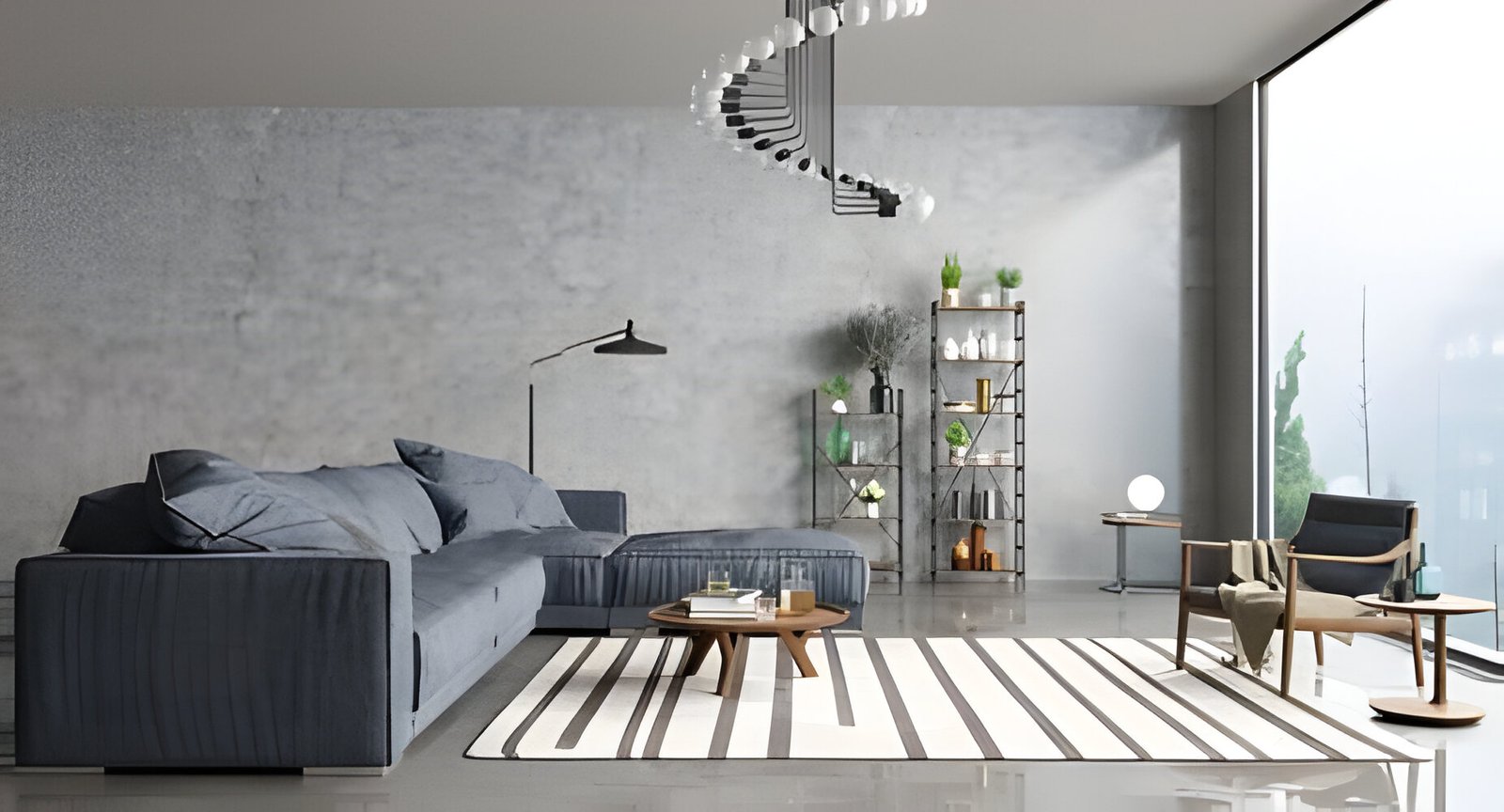Transforming your living space into a visually appealing and comfortable environment is key to enhancing day-to-day life. Drawing on effective home decoration ideas can elevate a simple room into a personalized and stylish haven. In the world of interior design, understanding the interplay of color wheel dynamics, the strategic placement of furniture, and the selection of the right decor can significantly impact the overall ambiance of a home. Whether it’s through minimalistic designs, vibrant kitchen design concepts, or seasonal Christmas decorations, the art of home decorating is central to creating spaces that reflect personal taste and functionality.
This article explores a variety of home decor ideas designed to inspire homeowners to infuse their spaces with creativity and style. From going big with art in small spaces to making the most of an alcove, the suggestions delve into how to effectively utilize every inch of your home. Incorporating mirrors to deepen space, painting floors for an unexpected pop of color, displaying quirky items for a touch of personality, flaunting shelf wealth, and bringing the outside in are among the key strategies discussed. Each of these home decorating ideas aims to guide readers through the exciting journey of transforming their living areas into beautifully curated spaces, combining elements of the color wheel, interior design principles, and personal flair for a truly unique home environment.
Go Big with Art in Small Spaces
Living in a small home doesn’t mean skimping on style. Large wall art transforms limited spaces by making a bold statement and reflecting personal taste. When selecting art for small spaces, consider pieces that resonate with personal aesthetics and create a focal point. Large-scale artworks by talented artists using advanced digital tools can elevate any space, offering a gallery-like effect even in compact areas.
Art Selection for Small Spaces
Choosing the right piece of art involves more than just liking it; it should also fit the space and style of your home. Opt for large, oversized wall décor that complements the existing décor and color scheme. Whether it’s abstract, surreal, or natural imagery, the artwork should enhance the room’s character without overwhelming it.
Art Placement Tips
Strategically placing large art pieces can make a room appear larger and more inviting. Consider the entrance or a main wall in the living area for a significant impact. Hanging art above eye level, such as above door frames or between windows, can also create the illusion of higher ceilings and more space. Ensure the artwork is the focal point by minimizing clutter around it.
Impact of Large-Scale Art
Large pieces of art add luxury and define spaces effectively, especially in open-plan layouts. Unlike bulky furniture, which can crowd a small room, a significant art piece delivers impact without occupying floor space. It sets the tone of the home and can make small areas appear more extensive and airy, significantly enhancing the living environment.
Make the Most of an Alcove
Alcoves, often seen as awkward spaces in homes, present unique opportunities for creative and functional design. Interior designers advocate for transforming these niches into visually appealing and practical areas that enhance the overall ambiance of a room.
Alcove Design Ideas
Experts suggest using alcoves as focal points by incorporating bold wallpapers or a striking paint color. This approach not only adds depth but also character to any room, making these spaces stand out. For those with larger alcoves, placing statement pieces like artwork or sculptural elements can create a personal art gallery vibe. Alternatively, alcoves can be converted into cozy reading nooks or stylish home offices with the right furniture and accessories.
Maximizing Alcove Space
To make the most of an alcove, consider installing built-in shelving or cabinetry. These not only provide functional storage solutions but also allow for the display of decorative items, books, and artwork. Adding accent lighting, such as sconces or pendant lights, can highlight these displays and contribute to a cozy ambiance. For smaller alcoves, mirrors can be used to visually expand the space and enhance the light within the area this can only be possible if you create Customa walkin closet by visitng bkciandre.com.
Alcove Styling Tips
Styling an alcove requires a balance of creativity and restraint. Incorporating greenery can add a lively touch, while strategic placement of decorative items or collections can turn the alcove into a mini gallery. It’s crucial to maintain some negative space to avoid a cluttered appearance, allowing each item to stand out and contribute to the overall aesthetic of the room.
Follow the Curves
Embracing the fluidity of design, curved interior elements offer a unique aesthetic that combines comfort with modernity. This section delves into how incorporating curves into furniture and decor can transform a living space.
Incorporating Curved Furniture
Curved furniture, with its smooth, rounded lines, introduces a contemporary feel that balances functionality and artistry. Ideal for both small and large spaces, curved furniture like sofas and dining tables not only enhances the visual appeal but also promotes comfort and flow. In the living room, a curved sectional sofa can create a cozy, inviting atmosphere, while in the dining area, a round table with a curved base serves as a stylish centerpiece.
Curved Decor Elements
Decor elements with curved designs, such as vases, mirrors, and lighting fixtures, add a touch of elegance and continuity to the home. Curved mirrors can expand the perception of space, and lighting fixtures with flowing designs act as focal points, providing both illumination and artistic flair. Accessories like sculptural pieces and soft, textured throws incorporate subtle curves that complement the overall decor.
Creating Flow with Curves
The strategic placement of curved elements can significantly influence the flow and functionality of a room. In the kitchen, curved countertops and cabinetry facilitate smooth movement and enhance the workflow. The classic kitchen work triangle, integrating the stove, sink, and refrigerator within a curved layout, minimizes unnecessary movement, optimizing the space for efficiency and ease of use.
By integrating curved furniture and decor elements, homeowners can achieve a harmonious and inviting atmosphere that encourages relaxation and enjoyment.
Use Mirrors to Deepen a Space
Mirrors are transformative in interior design, not only for their practical use but also for their ability to alter the perception of space. Strategically placed, mirrors can make a room feel larger, brighter, and more open.
Mirror Placement Strategies
To maximize the impact of mirrors, consider their placement carefully. Positioning a mirror to reflect a window can simulate an additional window, enhancing natural light and views. Mirrors placed at the end of hallways or rooms create a tunnel-like effect, elongating the space visually. In unique instances, such as in the DB Apartment in São Paulo, mirrors wrapped around structural pillars can make them seemingly disappear, further opening up the area.
Types of Mirrors for Home Decor
Choosing the right type of mirror can significantly influence a room’s aesthetic and functionality. Large, full-length mirrors serve as statement pieces and amplify light effectively. Decorative mirrors, such as those with antique finishes or innovative shapes, add character while maintaining the illusion of space. In compact areas, mirrored furniture or fixtures, like those used in Type Street Apartment in Melbourne, incorporate utility and style without sacrificing precious square footage.
Optical Illusions with Mirrors
Mirrors excel in creating optical illusions that enhance the spatial dynamics of a room. For instance, a mirror placed opposite a beautiful artwork or focal point can double its visual impact. Mirrored doors, such as those in Sola House in Madrid, cleverly conceal spaces while expanding the visual field of the room. By reflecting key elements of a room’s decor, mirrors not only increase light but also create fascinating visual effects that draw the eye and give the space a unique character.
Paint Your Floors
Painting your floors can dramatically change the ambiance of your home, offering an easy and impactful way to update your living space. Whether revitalizing over-sanded, stained, or older flooring, a fresh coat of paint can extend the life of your floors while allowing for creative expression through a variety of color options.
Floor Paint Color Ideas
Homeowners often choose to paint hardwood floors white for a clean, crisp look, but the possibilities are endless. Bold colors like Atomic Red or Royal Navy can transform a room into a vibrant space, while softer tones like dusky pink Hellebore provide a subtle elegance. For a coordinated scheme, consider using tonally similar shades on your walls, woodwork, and flooring, such as the bold Air Force Blue complemented by contrasting Jack Black woodwork.
Floor Painting Techniques
To ensure a smooth application, start by removing all furniture and thoroughly cleaning the floor. If the wood has a glossy finish, lightly sand the surface to dull it before applying a primer like Fresh Start® High-Hiding All Purpose Primer. Use a brush for the edges and a roller with an extension pole for the rest of the floor. Apply the chosen paint, such as Floor & Patio Latex Enamel, in even coats, allowing adequate drying time between applications.
Maintenance of Painted Floors
Regular maintenance is crucial to preserve the beauty and durability of painted floors. Sweep or vacuum regularly to remove dirt that can scratch the surface. For cleaning, opt for a gentle, water-based cleaner to avoid damaging the paint. Avoid soaking the floor or using steam mops, as excessive moisture can harm the paint finish. Periodically, inspect the floor for wear and apply a fresh coat of paint or a non-yellowing, water-based polyurethane to maintain its appearance and protect against damage.
Display One Quirky Thing
Selecting statement pieces involves understanding their unique and bold characteristics that make them stand out as focal points in a room. For instance, mission furniture, known for its solid craftsmanship and timeless design, serves as an excellent choice. When choosing such items, consider both their aesthetic appeal and functionality, ensuring they complement the room’s layout and dimensions.
Incorporating Quirky Decor
Incorporating quirky decor, like oversized mirrors or bold sofas, adds personality and transforms spaces into visually engaging areas. These elements should not only match the existing decor but also introduce an element of surprise, enhancing the room’s aesthetic while maintaining a cohesive look.
Balancing Quirky with Classic
To achieve a harmonious balance, it is crucial to mix quirky elements with classic designs. This approach allows the statement piece to shine without overwhelming the space. Pairing a unique item with more subdued, classic pieces creates a dynamic yet refined atmosphere, ensuring the decor is both striking and tastefully arranged.
Flaunt Your Shelf Wealth
Bookshelf Styling Tips
When embarking on bookshelf styling, begin by laying out all potential items, starting with larger pieces like frames, which help structure the space. Gradually layer smaller items, adjusting as needed until the composition feels balanced. Remember, styling is a dynamic process, and it’s fine to rearrange until everything clicks. Utilize larger framed art on the back wall of the shelves to add depth and introduce splashes of color or pattern.
Color-Coordinating Bookshelves
For a visually pleasing bookshelf, consider color-coordinating your books. Start by emptying the shelves and grouping books by color on the floor. Arrange them from dark to light shades to create an appealing gradient. This method not only organizes your collection but also turns your bookshelf into an artistic element of the room.
Mixing Books with Decor Items
Incorporate a mix of books and decorative items to create a rich, layered look. Stack books both horizontally and vertically to form bases for placing items like vases or sculptures, enhancing texture and height. Work in odd numbers for a natural, eye-catching arrangement. Introduce items with varying heights to break monotony and add interest.
Bring the Outside In
Indoor Plants Selection
Selecting the right indoor plants is crucial for bringing a touch of nature indoors. When choosing plants, it’s important to consider the specific conditions of your home. Plants like the Snake Plant thrive in low light and require minimal care, making them perfect for north-facing windows. For areas with bright, indirect light, African Violets are an excellent choice, as they bloom beautifully under these conditions. Always check the health of the plant, including the foliage and presence of insects or diseases, to ensure it can thrive in your indoor environment.
Nature-Inspired Decor
Incorporating elements from nature into your home decor can transform your space into a serene oasis. Utilize materials such as wood, stone, and floral patterns to create a cohesive look that echoes the beauty of the outdoors. Decorative items like seashells or driftwood can serve as unique focal points, while larger items such as a piece of driftwood can stand alone on a shelf, adding a natural and rustic touch to the decor.
Creating Indoor-Outdoor Flow
To achieve a seamless transition between indoor and outdoor spaces, consider integrating large glass doors or floor-to-ceiling windows. These elements not only enhance natural light but also create a visual connection with the outdoors. Consistency in flooring, such as extending the same tiles from indoors to your patio, can further blur the lines between the two areas. Incorporating similar furniture styles and colors in both spaces can also enhance the flow, making the transition almost imperceptible.
Conclusion
Throughout this article, we explored a myriad of home decoration ideas, each designed to enhance and transform living spaces into areas of comfort, style, and personal expression. From the strategic placement of large-scale art in small spaces to the creative utilization of alcoves and the introduction of curved furniture and decor elements, we aimed to provide readers with insights into making the most of their homes. These ideas, grounded in the principles of interior design and personalized flair, are not only about beautifying spaces but also about maximizing functionality and fostering an environment that reflects homeowners’ unique tastes.
As we conclude, it’s clear that the journey of home decoration is an evolving process, one that offers endless opportunities for creativity and innovation. Incorporating elements such as mirrors to enhance spatial perception, painting floors for an aesthetic overhaul, displaying quirky items for personality, and embracing the beauty of nature indoors all contribute to creating spaces that are not only visually appealing but truly emblematic of the inhabitants’ lives. By following these guidelines and allowing room for personal creativity, readers are equipped to embark on their own home decoration projects, transforming their spaces into well-curated reflections of their personal stories and styles.
FAQs
What are the current trends in home decor? Currently, the trend is all about bold and playful elements. Oversized vases, sculptural furniture, and quirky decor pieces are very popular. These items add a fun yet sophisticated flair to any room, perfect for those looking to inject some personality and a pop of style into their living space.
How can I enhance the appearance of my room? Consider adding some wall trims such as picture molding or beadboard. These simple additions can significantly enhance the aesthetic appeal of your space by adding texture and depth. For smaller spaces, applying this trim to just one wall and painting it the same color as the rest of the room can create a subtle yet effective accent.
What are the predicted interior design trends for 2024? According to industry experts, the interior design trends for 2024 will include the use of unique, offbeat colors and a blend of design elements from various eras. A renewed interest in romanticism is also expected, with jewel tones and floral patterns providing a nostalgic and charming escape from modern technology.
What are some ways to modernize a space? To give your space a modern update, start by decluttering and giving it a thorough clean. Rearranging the furniture can also offer a fresh perspective. Consider borrowing decor from other rooms, upcycling or reupholstering existing furniture, and updating displays on coffee tables, mantels, and bookshelves. Creating a gallery wall with underused prints or incorporating greenery from your yard can also add a contemporary touch to your environment.











